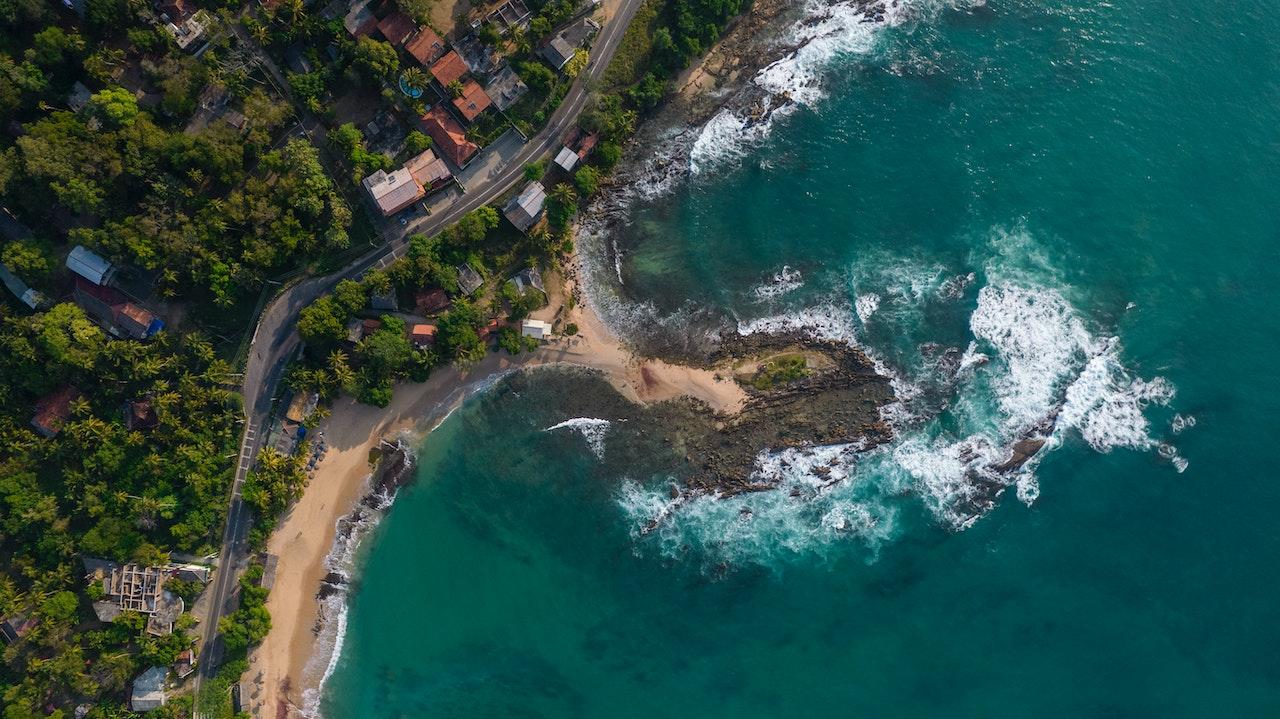Sri Lanka, also called the “Pearl of the Indian Ocean”, is an island nation in South Asia with a fascinating geography and a varied climate. The country’s geographical features and climate play an important role in the culture, economy and daily life of its people. In this article, we provide a comprehensive overview of Sri Lanka’s geography and climate and examine the impact on the country and its people.
Table of Contents
1. Geography of Sri Lanka
1.1 Location and Size of Sri Lanka
Sri Lanka is located southeast of India in the Indian Ocean and is the 25th largest island in the world with an area of about 65,610 square kilometers. The island is a maximum of 435 kilometers long and 225 kilometers wide. The land mass is surrounded by numerous smaller islands and coral reefs.
1.2 Topography and Terrain
The topography of Sri Lanka is characterized by mountains, valleys, plateaus, rivers and lakes. In the center of the island is the central highlands, dominated by the country’s highest mountains, Pidurutalagala (2,524 m) and Adam’s Peak (2,243 m). The highlands are surrounded by fertile valleys and rivers used for agriculture and irrigation.
1.3 Waters and Coastline
Sri Lanka has a coastline of about 1,340 kilometers, characterized by fine sandy beaches, lagoons and coral reefs. The Strait of Palk separates Sri Lanka from India in the north, and the Gulf of Mannar in the northwest is known for its biodiversity. In the southwest of the island is the bay of Galle, known for its historic city and beautiful beaches.
1.4 Natural Resources
Sri Lanka is rich in natural resources such as gems, minerals, sand, clay, graphite and water. Mining and resource extraction are important industries in the country. Sri Lanka is also known for its tea plantations, which produce some of the best tea in the world.
2 Climate of Sri Lanka
2.1 Climate zones and weather patterns
Due to its location and topography, Sri Lanka has a tropical climate with an average temperature of about 27 degrees Celsius. However, there are significant climatic differences depending on the region and altitude. Sri Lanka has two main climate zones: the tropical rainy climate and the dry climate.
2.2 Monsoon system and rainy season
Sri Lanka is influenced by the monsoon system, which brings the southwest monsoon from April to September and the northeast monsoon from October to March. The southwest monsoon brings abundant rain to the southwest and center of the island, while the northeast monsoon is usually drier. The rainy season varies from region to region, but generally most of the rain falls between May and September.
2.3 Natural disasters
Sri Lanka is prone to natural disasters such as floods, landslides and cyclones due to its location in the Indian Ocean and its tropical climate. In the past, these events have caused significant damage and affected human and animal life.
3. effects on culture and everyday life
Sri Lanka’s geography and climate have a significant impact on the culture and daily life of its people. Agriculture is an important industry in the country and is strongly influenced by the natural resources and climate. Tea plantations in the central highlands are an important part of Sri Lanka’s culture and tourism.
The coasts and lagoons are an important part of the fishing industry and the livelihood for many coastal communities. The mountains and rivers provide opportunities for tourism, hiking and adventure sports.
4. summary
Overall, the geography and climate of Sri Lanka have a great influence on the culture, economy and daily life of the people. The diversity of landscape and climate makes Sri Lanka a unique and fascinating place. It is important to appreciate and protect the importance of Sri Lanka’s natural resources and environment to ensure that they are available for future generations.
